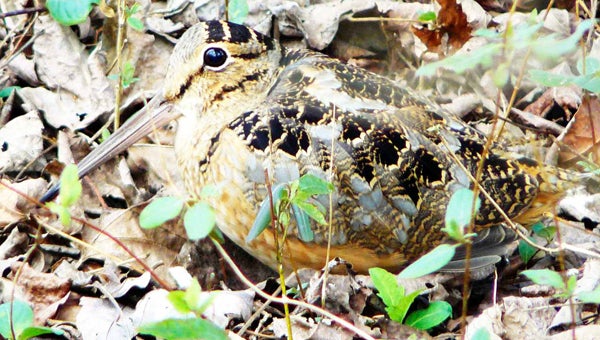Woodcock watch in Jackson Park during February
Published 9:24 am Monday, February 18, 2013
We have all heard of a “snipe hunt,” but on one late February evening a week or so ago, a group of intrepid local birders met in search of a close relative of the snipe, the American Woodcock.
The American Woodcock is a fairly common bird throughout the Carolinas, but it still remains hard to see and even harder to study. This large member of the sandpiper and snipe family is about the size of a Rock Dove or Feral Pigeon, but is cloaked in an intricate pattern of brown, buff and chestnut feathers. It has rather large protruding eyes, which indicate that it is a nocturnal species, and it is therefore more easily seen during the evening hours. The bill is very long with a flexible tip to the upper mandible and it’s perfectly adapted for probing for earthworms in damp soil and leaf litter.
Woodcocks inhabit alder thickets, wet bottomlands and hollows overgrown with willows, maples and similar vegetation, also woodland edges and adjacent grasslands. They prefer areas that are damp where they can feed on earthworms in the moist soil. Should the habitat become too wet, woodcocks will be forced into drier areas that more suit their needs. Being a bird of the shadows, good views are hard to obtain and their true coloration is rarely seen.
The woodcock watchers all assembled at their meeting place in Jackson Park in Hendersonville that night, and readied ourselves for the evening revelry. We had come to watch the twilight display flight of the woodcocks, an activity only performed at dusk and dawn.
To listen to this nocturnal revelry, first find suitable woodcock habitat, such as a wet thicket surrounded by short grass. Then wait until the sun is just dipping behind the horizon at around 6 p.m. in the evening, walk down to the chosen site and wait.


